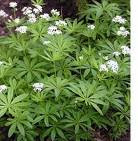Arjuna is a member of the Combretaceae family of plants and so is closely related to hareer (Terminalia chebula) and the Indian almond tree, Terminalia catappa and like these hardwood trees, arjuna is native to the Indian subcontinent. It has been used for centuries in both the Unani and Ayuvedic systems of medicine in the Indian subcontinent, and modern medical research has so far concurred with many of it uses.
 The tree can grow to height of around 30 metres, and flowers in
The tree can grow to height of around 30 metres, and flowers in  It was mentioned in writings of the 6th or 7th centuries (AD) by Vagbhata as being useful in the treatment of wounds, haemorrhages and ulcers, being used externally in such cases. In Ayurveda it is used now for a variety of ailments which include the removal of internal parasites, biliousness, a cardiac tonic, anaemia, for fractures (not to mend bones per se, but to repair the damaged tissues around the fractures) and for cancerous tumours. In the Unani (Greek) system of medicine it is an aphrodisiac, diuretic, and expectorant. It is used for spermatorrhea and gonorrhoea and other STDs with the bark being combined with that of Santalum album or sandalwood. It has anti-microbial, antifungal and antioxidant properties and medical research has so far upheld its traditional uses.
It was mentioned in writings of the 6th or 7th centuries (AD) by Vagbhata as being useful in the treatment of wounds, haemorrhages and ulcers, being used externally in such cases. In Ayurveda it is used now for a variety of ailments which include the removal of internal parasites, biliousness, a cardiac tonic, anaemia, for fractures (not to mend bones per se, but to repair the damaged tissues around the fractures) and for cancerous tumours. In the Unani (Greek) system of medicine it is an aphrodisiac, diuretic, and expectorant. It is used for spermatorrhea and gonorrhoea and other STDs with the bark being combined with that of Santalum album or sandalwood. It has anti-microbial, antifungal and antioxidant properties and medical research has so far upheld its traditional uses. Clinical trials with animals have also shown it to have cardio-protective properties, as well as blood pressure reducing and cholesterol lowering properties. (Dwivadi S. [2007] “Terminalia arjuna Wright and Arn. A useful drug for cardio-vascular disorders” Journal of Ethnopharmacy vol.114 (2): pp 114-129.)
Clinical trials with animals have also shown it to have cardio-protective properties, as well as blood pressure reducing and cholesterol lowering properties. (Dwivadi S. [2007] “Terminalia arjuna Wright and Arn. A useful drug for cardio-vascular disorders” Journal of Ethnopharmacy vol.114 (2): pp 114-129.)  The flavonoids found in the bark have antioxidant and anti-inflammatory properties and the glycosides contained in it are probably responsible for its cardio-tonic properties. Arjunatin is one glycoside which has been found in the bark of T. arjuna, and the fruit contains arjunone, while other glucosides have also been isolated from the tree, for example, cerasidin, β-sitosterol, friedlin, methyl oleanolate and gallic, ellagic and arjunic acids.
The flavonoids found in the bark have antioxidant and anti-inflammatory properties and the glycosides contained in it are probably responsible for its cardio-tonic properties. Arjunatin is one glycoside which has been found in the bark of T. arjuna, and the fruit contains arjunone, while other glucosides have also been isolated from the tree, for example, cerasidin, β-sitosterol, friedlin, methyl oleanolate and gallic, ellagic and arjunic acids. The tree is also used for its timber in boat-building, for houses and other construction work, for carts and agricultural implements. The leaves are food for the tussar silkworm too so all parts of the tree have their uses.


















































